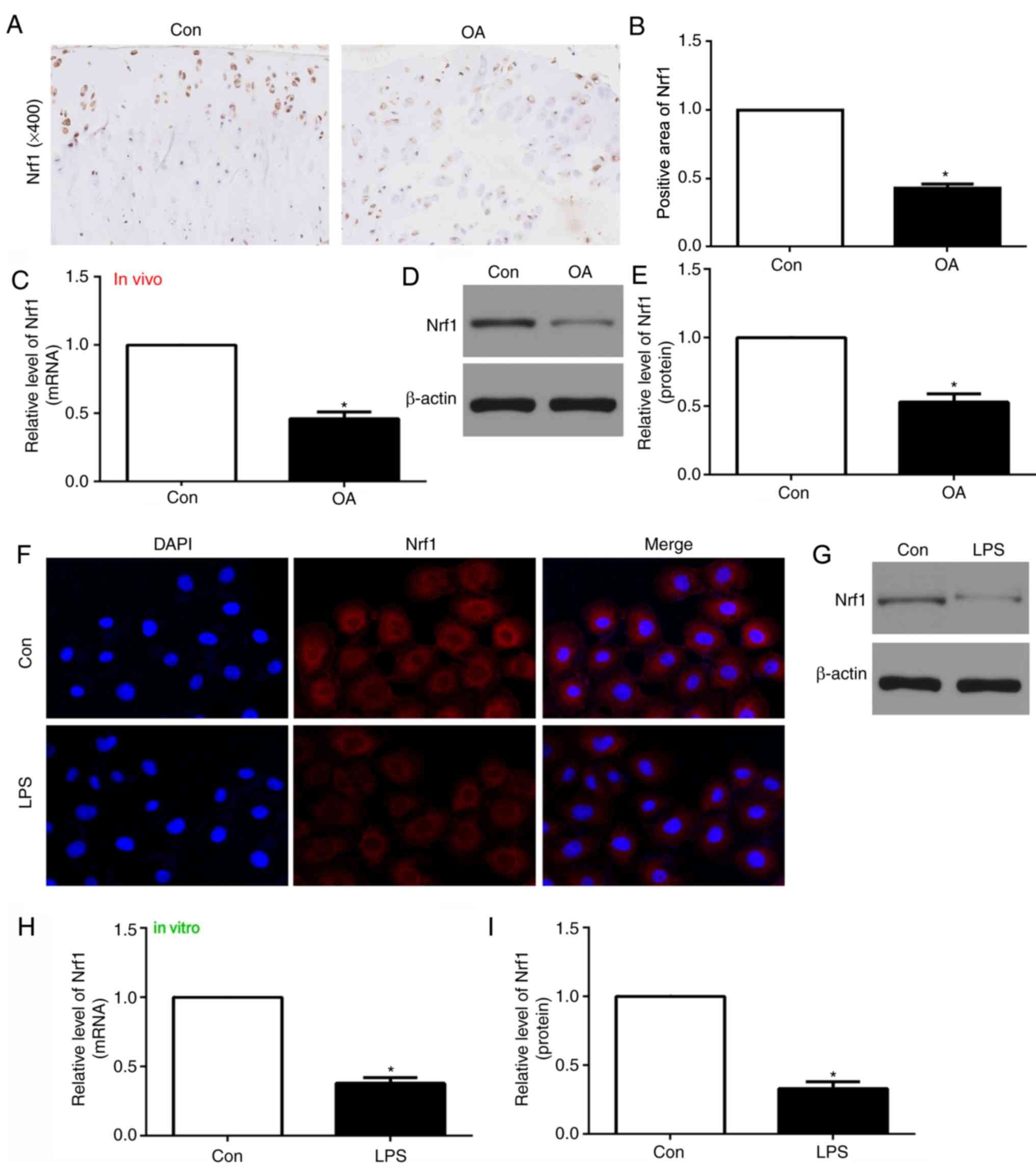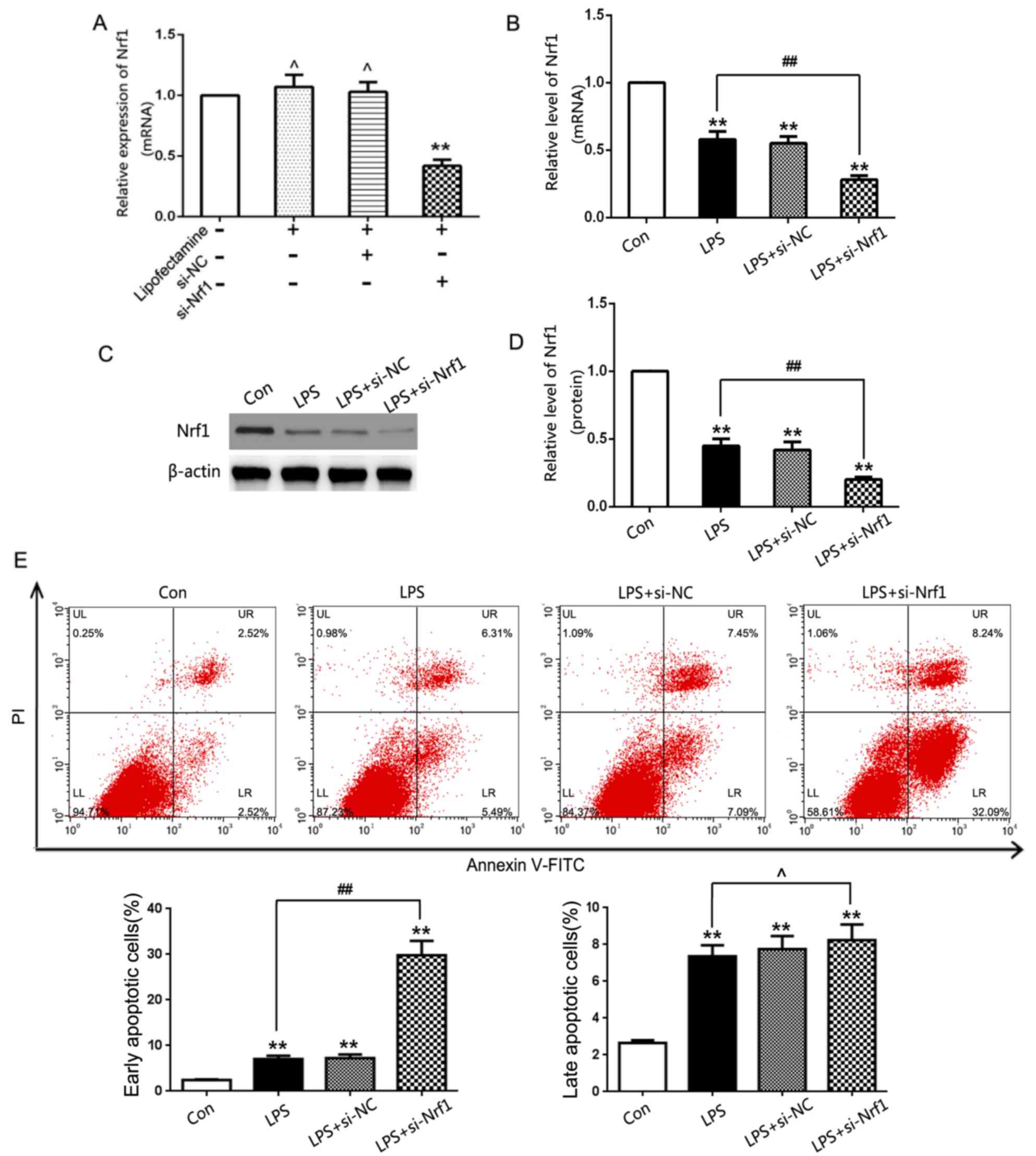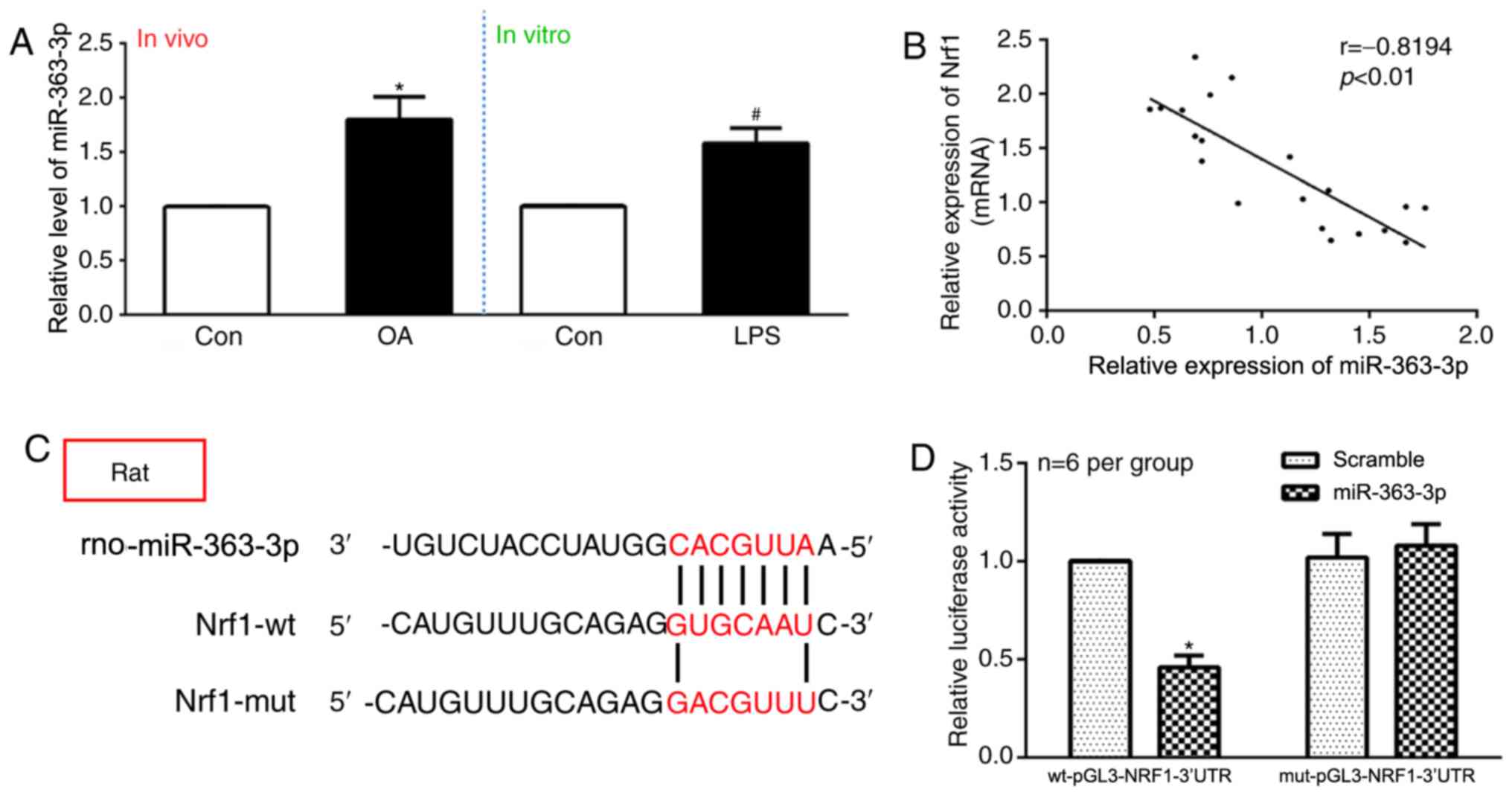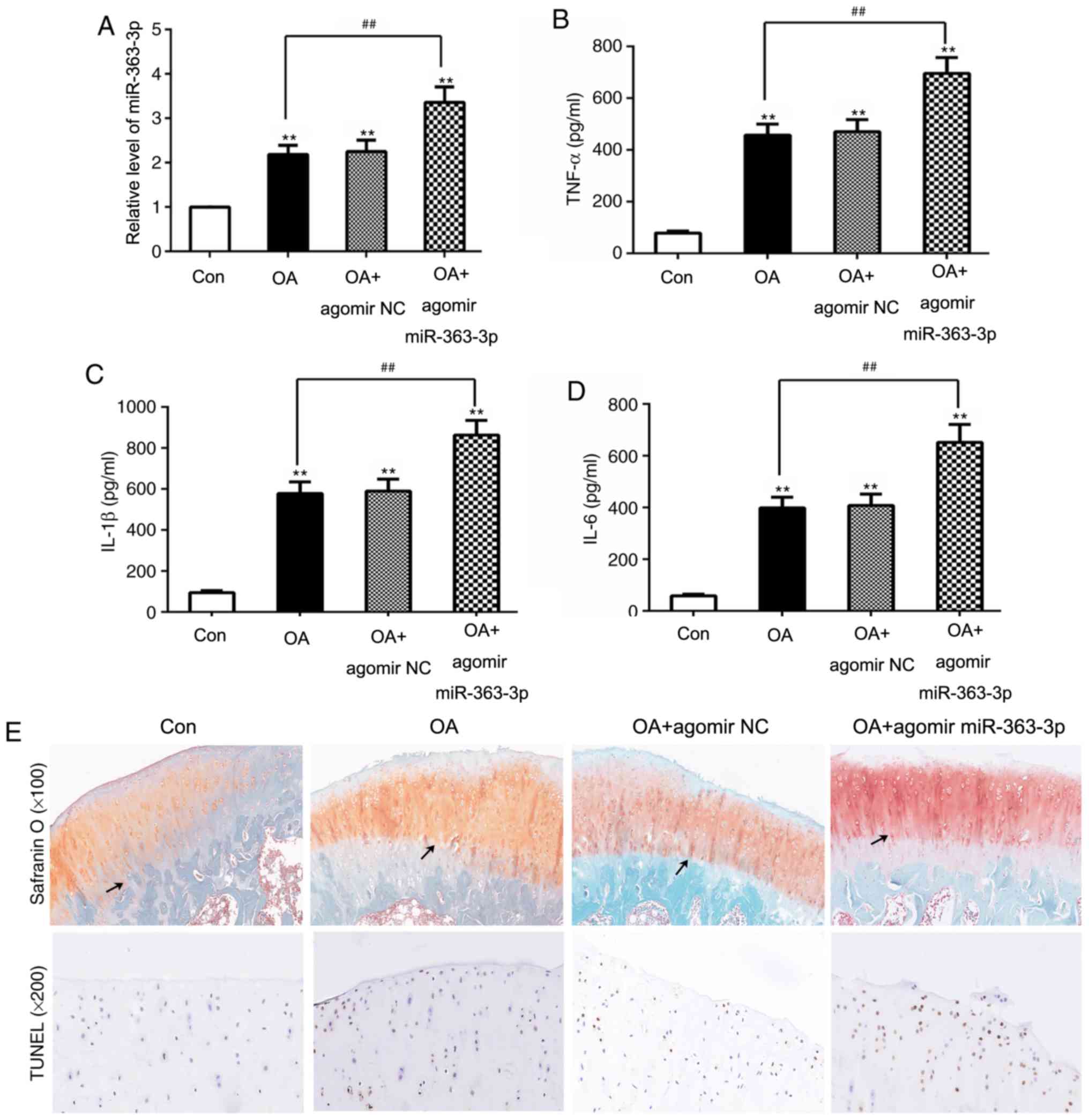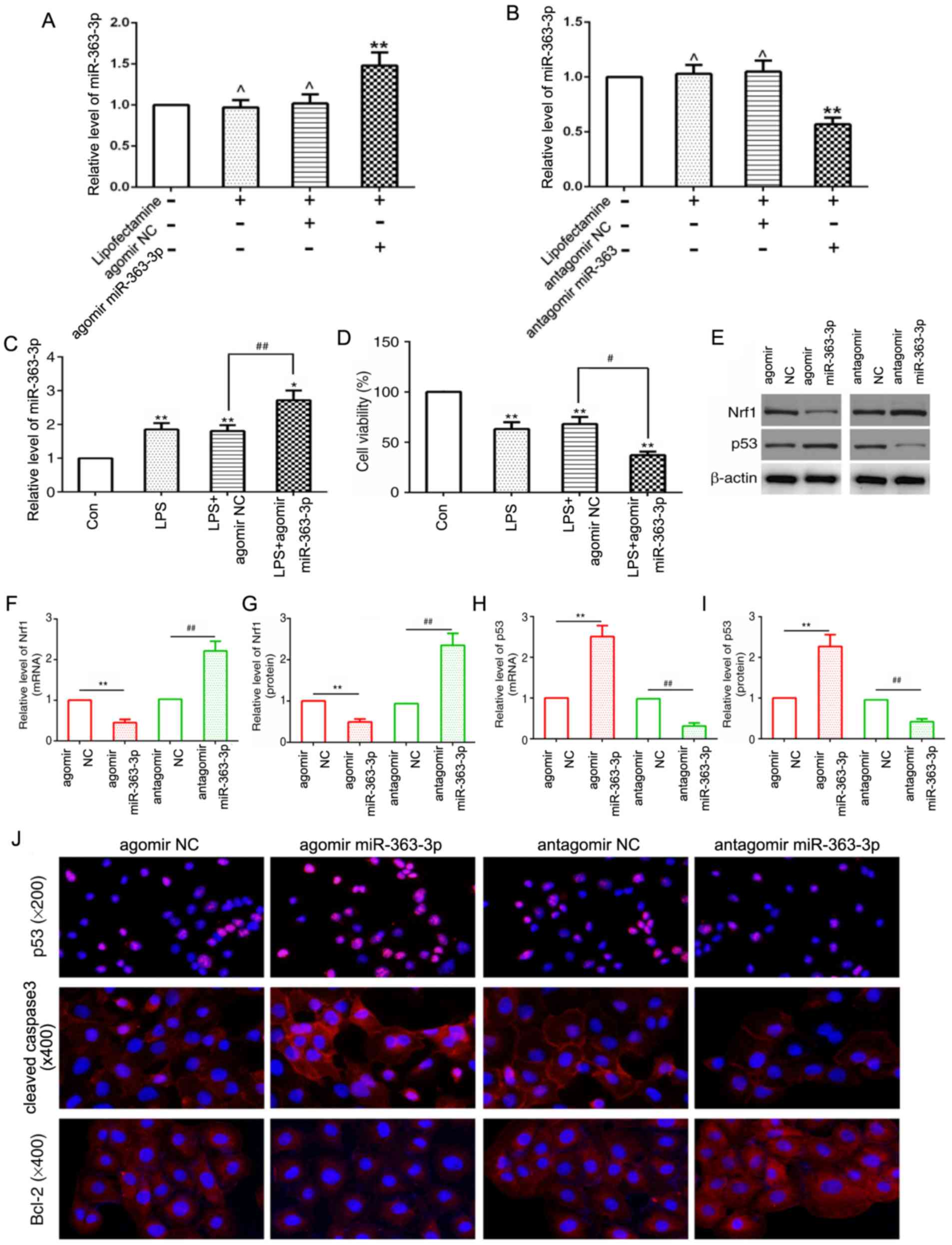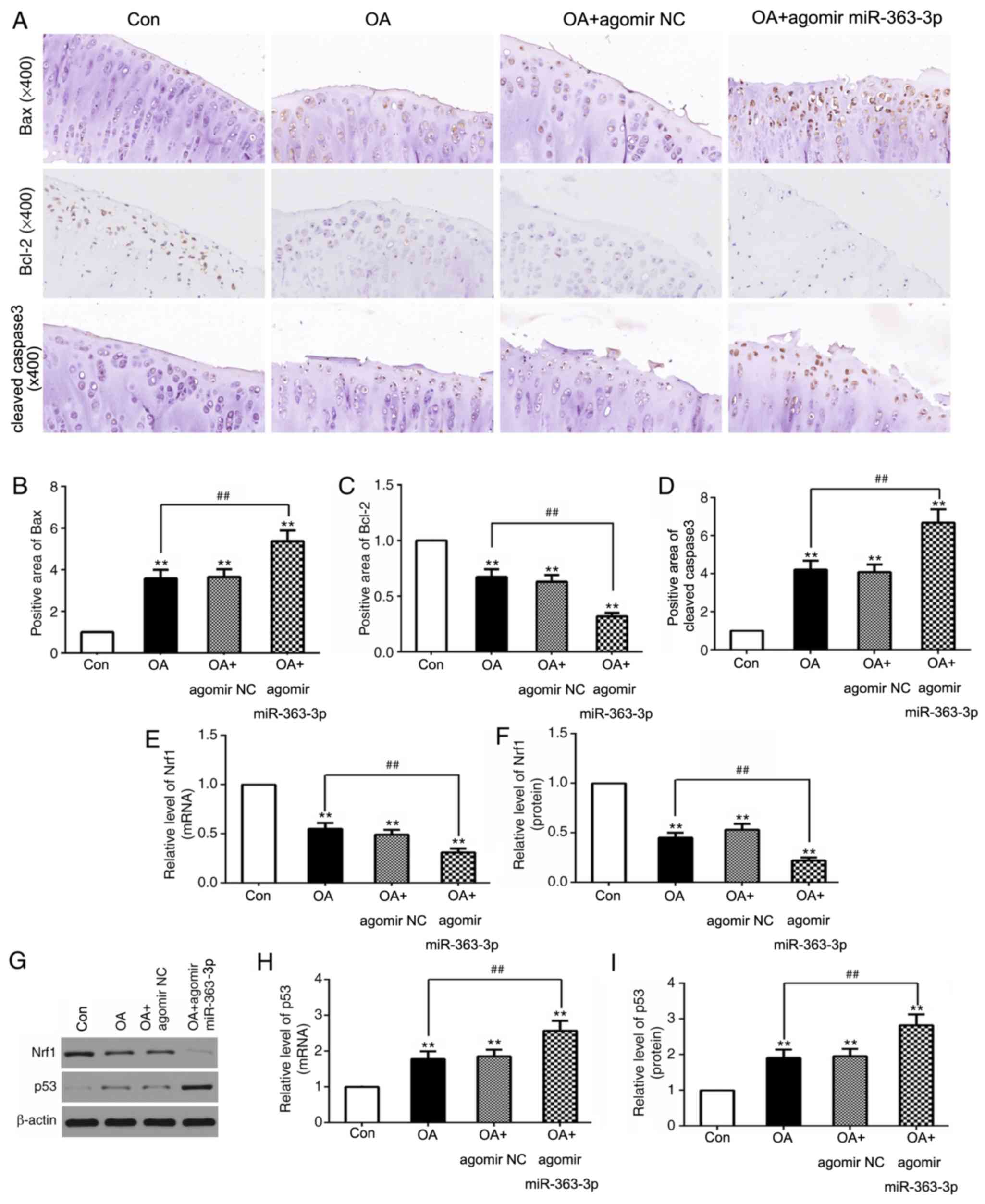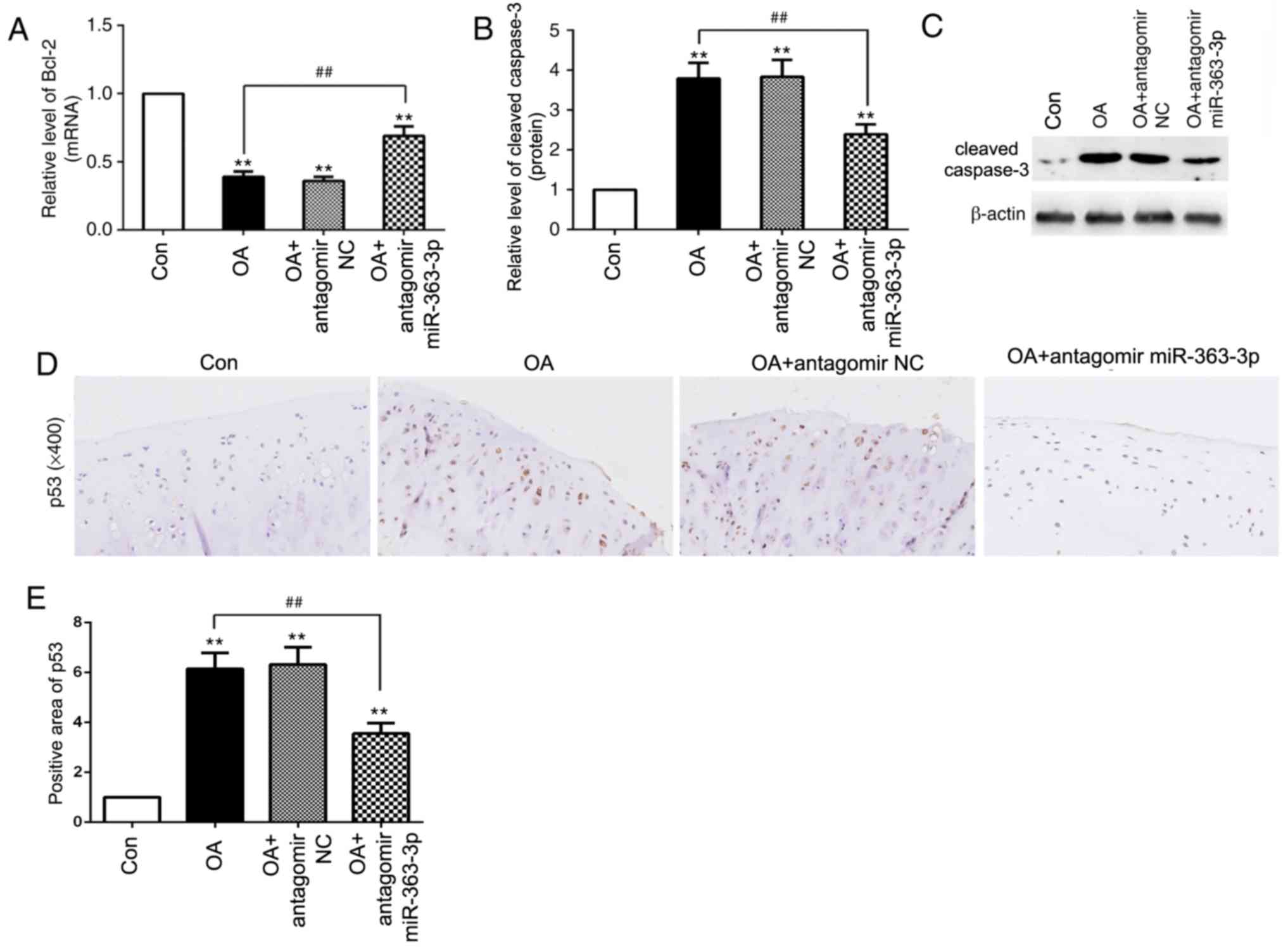|
1
|
Xie F, Kovic B, Jin X, He X, Wang M and
Silvestre C: Economic and humanistic burden of osteoarthritis: A
systematic review of large sample studies. Pharmacoeconomics.
34:1087–1100. 2016. View Article : Google Scholar : PubMed/NCBI
|
|
2
|
Gu YT, Chen J, Meng ZL, Ge WY, Bian YY,
Cheng SW, Xing CK, Yao JL, Fu J and Peng L: Research progress on
osteoarthritis treatment mechanisms. Biomed Pharmacother.
93:1246–1252. 2017. View Article : Google Scholar : PubMed/NCBI
|
|
3
|
Barnett R: Osteoarthritis. Lancet.
391:19852018. View Article : Google Scholar : PubMed/NCBI
|
|
4
|
Ribitsch I, Mayer RL, Egerbacher M, Gabner
S, Kańduła MM, Rosser J, Haltmayer E, Auer U, Gültekin S, Huber J,
et al: Fetal articular cartilage regeneration versus adult
fibrocartilaginous repair: Secretome proteomics unravels molecular
mechanisms in an ovine model. Dis Model Mech. 11:dmm0330922018.
View Article : Google Scholar : PubMed/NCBI
|
|
5
|
Kim JH, Jeon J, Shin M, Won Y, Lee M, Kwak
JS, Lee G, Rhee J, Ryu JH, Chun CH and Chun JS: Regulation of the
catabolic cascade in osteoarthritis by the zinc-ZIP8-MTF1 axis.
Cell. 156:730–743. 2014. View Article : Google Scholar : PubMed/NCBI
|
|
6
|
Ma F, Li G, Yu Y, Xu J and Wu X:
MiR-33b-3p promotes chondrocyte proliferation and inhibits
chondrocyte apoptosis and cartilage ECM degradation by targeting
DNMT3A in osteoarthritis. Biochem Biophys Res Commun. 519:430–437.
2019. View Article : Google Scholar : PubMed/NCBI
|
|
7
|
Evans MJ and Scarpulla RC: NRF-1: A
trans-activator of nuclear-encoded respiratory genes in animal
cells. Genes Dev. 4:1023–1034. 1990. View Article : Google Scholar : PubMed/NCBI
|
|
8
|
Scarpulla RC: Nuclear respiratory factors
and the pathways of nuclear-mitochondrial interaction. Trends
Cardiovasc Med. 6:39–45. 1996. View Article : Google Scholar : PubMed/NCBI
|
|
9
|
Zhang Y and Manning BD: mTORC1 signaling
activates NRF1 to increase cellular proteasome levels. Cell Cycle.
14:2011–2017. 2015. View Article : Google Scholar : PubMed/NCBI
|
|
10
|
Zhang GM, Deng MT, Lei ZH, Wan YJ, Nie HT,
Wang ZY, Fan YX, Wang F and Zhang YL: Effects of NRF1 on
steroidogenesis and apoptosis in goat luteinized granulosa cells.
Reproduction. 154:111–122. 2017. View Article : Google Scholar : PubMed/NCBI
|
|
11
|
Niu N, Li Z, Zhu M, Sun H, Yang J, Xu S,
Zhao W and Song R: Effects of nuclear respiratory factor1 on
apoptosis and mitochondrial dysfunction induced by cobalt chloride
in H9C2 cells. Mol Med Rep. 19:2153–2163. 2019.PubMed/NCBI
|
|
12
|
Zhang H, Wu J, Keller JM, Yeung K, Keller
ET and Fu Z: Transcriptional regulation of RKIP expression by
androgen in prostate cells. Cell Physiol Biochem. 30:1340–1350.
2012. View Article : Google Scholar : PubMed/NCBI
|
|
13
|
Berezikov E, Guryev V, van de Belt J,
Wienholds E, Plasterk RH and Cuppen E: Phylogenetic shadowing and
computational identification of human microRNA genes. Cell.
120:21–24. 2005. View Article : Google Scholar : PubMed/NCBI
|
|
14
|
Zhang S, Chen L, Jung EJ and Calin GA:
Targeting microRNAs with small molecules: From dream to reality.
Clin Pharmacol Ther. 87:754–758. 2010. View Article : Google Scholar : PubMed/NCBI
|
|
15
|
Bao J, Li D, Wang L, Wu J, Hu Y, Wang Z,
Chen Y, Cao X, Jiang C, Yan W and Xu C: MicroRNA-449 and
microRNA-34b/c function redundantly in murine testes by targeting
E2F transcription factor-retinoblastoma protein (E2F-pRb) pathway.
J Biol Chem. 287:21686–21698. 2012. View Article : Google Scholar : PubMed/NCBI
|
|
16
|
Zhao Z, Dai XS, Wang ZY, Bao ZQ and Guan
JZ: MicroRNA-26a reduces synovial inflammation and cartilage injury
in osteoarthritis of knee joints through impairing the NF-κB
signaling pathway. Biosci Rep. 39:BSR201820252019. View Article : Google Scholar : PubMed/NCBI
|
|
17
|
Ma Y, Wu Y, Chen J, Huang K, Ji B, Chen Z,
Wang Q, Ma J, Shen S and Zhang J: miR-10a-5p promotes chondrocyte
apoptosis in osteoarthritis by targeting HOXA1. Mol Ther Nucleic
Acids. 14:398–409. 2019. View Article : Google Scholar : PubMed/NCBI
|
|
18
|
Ding Y, Wang L, Zhao Q, Wu Z and Kong L:
MicroRNA93 inhibits chondrocyte apoptosis and inflammation in
osteoarthritis by targeting the TLR4/NF-κB signaling pathway. Int J
Mol Med. 43:779–790. 2019.PubMed/NCBI
|
|
19
|
Witkos TM, Koscianska E and Krzyzosiak WJ:
Practical aspects of microRNA target prediction. Curr Mol Med.
11:93–109. 2011. View Article : Google Scholar : PubMed/NCBI
|
|
20
|
Meng X, Ji Y, Wan Z, Zhao B, Feng C, Zhao
J, Li H and Song Y: Inhibition of miR-363 protects cardiomyocytes
against hypoxia-induced apoptosis through regulation of Notch
signaling. Biomed Pharmacother. 90:509–516. 2017. View Article : Google Scholar : PubMed/NCBI
|
|
21
|
Wenzhao L, Jiangdong N, Deye S, Muliang D,
Junjie W, Xianzhe H, Mingming Y and Jun H: Dually regulatory roles
of HMGB1 in inflammatory reaction of chondrocyte cells and mice.
Cell Cycle. 18:2268–2280. 2019. View Article : Google Scholar : PubMed/NCBI
|
|
22
|
Ni Z, Kuang L, Chen H, Xie Y, Zhang B,
Ouyang J, Wu J, Zhou S, Chen L, Su N, et al: The exosome-like
vesicles from osteoarthritic chondrocyte enhanced mature IL-1β
production of macrophages and aggravated synovitis in
osteoarthritis. Cell Death Dis. 10:5222019. View Article : Google Scholar : PubMed/NCBI
|
|
23
|
Livak KJ and Schmittgen TD: Analysis of
relative gene expression data using real-time quantitative PCR and
the 2(-Delta Delta C(T)) method. Methods. 25:402–408. 2001.
View Article : Google Scholar : PubMed/NCBI
|
|
24
|
Mankin HJ: Biochemical and metabolic
abnormalities in osteoarthritic human cartilage. Fed Proc.
32:1478–1480. 1973.PubMed/NCBI
|
|
25
|
Pope JE, McCrea K, Stevens A and Ouimet
JM: The relationship between NSAID use and osteoarthritis (OA)
severity in patients with hip and knee OA: Results of a case
control study of NSAID use comparing those requiring hip and knee
replacements to those in whom surgery was not recommended. Med Sci
Monit. 14:CR604–CR610. 2008.PubMed/NCBI
|
|
26
|
Onuora S: Osteoarthritis: Cartilage matrix
stiffness regulates chondrocyte metabolism and OA pathogenesis. Nat
Rev Rheumatol. 11:5042015. View Article : Google Scholar
|
|
27
|
Yudoh K and Karasawa R: Statin prevents
chondrocyte aging and degeneration of articular cartilage in
osteoarthritis (OA). Aging (Albany NY). 2:990–998. 2010. View Article : Google Scholar : PubMed/NCBI
|
|
28
|
Héraud F, Héraud A and Harmand MF:
Apoptosis in normal and osteoarthritic human articular cartilage.
Ann Rheum Dis. 59:959–965. 2000. View Article : Google Scholar : PubMed/NCBI
|
|
29
|
Sant KE, Hansen JM, Williams LM, Tran NL,
Goldstone JV, Stegeman JJ, Hahn ME and Timme-Laragy A: The role of
NRF1 and Nrf2 in the regulation of glutathione and redox dynamics
in the developing zebrafish embryo. Redox Biol. 13:207–218. 2017.
View Article : Google Scholar : PubMed/NCBI
|
|
30
|
Zhang J, Gu JY, Chen ZS, Xing KC and Sun
B: Astragalus polysaccharide suppresses palmitate-induced apoptosis
in human cardiac myocytes: The role of NRF1 and antioxidant
response. Int J Clin Exp Pathol. 8:2515–2524. 2015.PubMed/NCBI
|
|
31
|
Su Z, Yang Z, Xu Y, Chen Y and Yu Q:
MicroRNAs in apoptosis, autophagy and necroptosis. Oncotarget.
6:8474–8490. 2015. View Article : Google Scholar : PubMed/NCBI
|
|
32
|
Teng YL, Ren F, Xu H and Song HJ:
Overexpression of miRNA- 410-3p protects hypoxia-induced
cardiomyocyte injury via targeting TRAF5. Eur Rev Med Pharmacol
Sci. 23:9050–9057. 2019.PubMed/NCBI
|
|
33
|
Jiang L, Ge W and Geng J: miR-425
regulates cell proliferation, migration and apoptosis by targeting
AMPH-1 in non-small-cell lung cancer. Pathol Res Pract.
215:1527052019. View Article : Google Scholar : PubMed/NCBI
|
|
34
|
Wu G, Tan J, Li J, Sun X, Du L and Tao S:
miRNA-145-5p induces apoptosis after ischemia-reperfusion by
targeting dual specificity phosphatase 6. J Cell Physiol. Mar
18–2019.doi: 10.1002/jcp.28291 (Epub ahead of print).
|
|
35
|
Feng WT, Yao R, Xu LJ, Zhong XM, Liu H,
Sun Y and Zhou LL: Effect of miR-363 on the proliferation, invasion
and apoptosis of laryngeal cancer by targeting Mcl-1. Eur Rev Med
Pharmacol Sci. 22:4564–4572. 2018.PubMed/NCBI
|
|
36
|
Dong J, Geng J and Tan W: MiR-363-3p
suppresses tumor growth and metastasis of colorectal cancer via
targeting SphK2. Biomed Pharmacother. 105:922–931. 2018. View Article : Google Scholar : PubMed/NCBI
|
|
37
|
Lee KH and Kang TB: The molecular links
between cell death and inflammasome. Cells. 8:E10572019. View Article : Google Scholar : PubMed/NCBI
|
|
38
|
Zhu Y, Saito K, Murakami Y, Asano M,
Iwakura Y and Seishima M: Early increase in mRNA levels of
pro-inflammatory cytokines and their interactions in the mouse
hippocampus after transient global ischemia. Neurosci Lett.
393:122–126. 2006. View Article : Google Scholar : PubMed/NCBI
|
|
39
|
Liu T, Bao YH, Wang Y and Jiang JY: The
role of necroptosis in neurosurgical diseases. Braz J Med Biol Res.
48:292–298. 2015. View Article : Google Scholar : PubMed/NCBI
|
|
40
|
Tsujimoto Y, Cossman J, Jaffe E and Croce
CM: Involvement of the bcl-2 gene in human follicular lymphoma.
Science. 228:1440–1443. 1985. View Article : Google Scholar : PubMed/NCBI
|
|
41
|
Liu C, Shi Z, Fan L, Zhang C, Wang K and
Wang B: Resveratrol improves neuron protection and functional
recovery in rat model of spinal cord injury. Brain Res.
1374:100–109. 2011. View Article : Google Scholar : PubMed/NCBI
|
|
42
|
Clark WM, Rinker LG, Lessov NS, Hazel K,
Hill JK, Stenzel-Poore M and Eckenstein F: Lack of interleukin-6
expression is not protective against focal central nervous system
ischemia. Stroke. 31:1715–1720. 2000. View Article : Google Scholar : PubMed/NCBI
|
|
43
|
Glushakova OY, Glushakov AA, Wijesinghe
DS, Valadka AB, Hayes RL and Glushakov AV: Prospective clinical
biomarkers of caspase-mediated apoptosis associated with neuronal
and neurovascular damage following stroke and other severe brain
injuries: Implications for chronic neurodegeneration. Brain Circ.
3:87–108. 2017.PubMed/NCBI
|
|
44
|
Fridman JS and Lowe SW: Control of
apoptosis by p53. Oncogene. 22:9030–9040. 2003. View Article : Google Scholar : PubMed/NCBI
|
|
45
|
Lu Q, Rau TF, Harris V, Johnsonm M,
Poulsen DJ and Black SM: Increased p38 mitogen-activated protein
kinase signaling is involved in the oxidative stress associated
with oxygen and glucose deprivation in neonatal hippocampal slice
cultures. Eur J Neurosci. 34:1093–1101. 2011. View Article : Google Scholar : PubMed/NCBI
|















